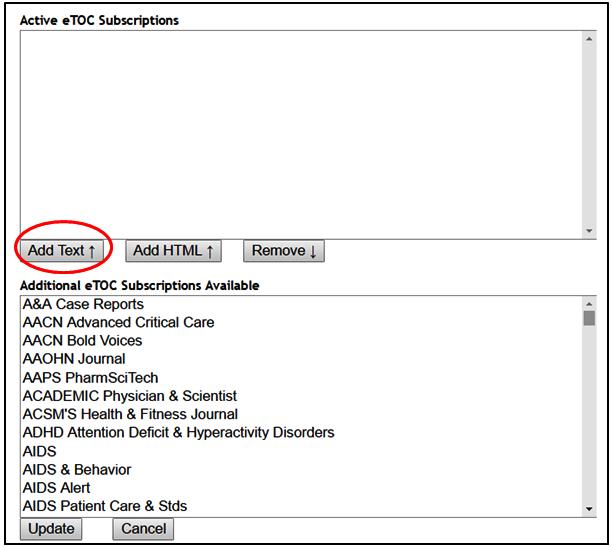
Journal alerts save valuable research time, and can be set up to provide automatic e-mail notification whenever a new issue of a particular journal becomes available on EBSCO.
To create a journal alert:
Sign into your My Research account (or create an account) before creating alerts
Browse for a specific journal title from the publications link (top of the ProQuest screen) or identify a publication in your search results.
Click the publication title to display publication details and click the Create alert link (in the bar above the title)
Define your publication alert details.
To manage alerts, click the Alerts tab on your My Research page.
This displays your search and publication alerts in the order you created them; delete, modify or sort alerts into your preferred order.
To set a up a journal alert first create a user account (requires email confirmation to activate account)
Journal alerts notify you by email when a new issue becomes available, to create a alert please sign in.
On ScienceDirect, locate the home page for journal you wish to receive alerts for.
To subscribe to a journal: click Subscribe to New Volume Alerts
To modify a journal alert, click on your username at the top of the screen and choose Manage my Alerts
To set up a Journal Alert
1. Select My Workspace, located in the blue banner at the top of the page.

2. Choose My eTOCS, located below the blue banner.

3. Enter your email address in the box provided.
4. A list of journal titles will be displayed.
5. Select the journal required (you can select more than one) and click the up arrow to add the title from the list.

6. Click Update at the bottom of the screen, to save changes.
Avondale University acknowledges our Sovereign God as Creator and Provider of all things. We respectfully acknowledge the Awabakal and Darramuragal people as the traditional custodians of the lands on which we live, work, study and worship across our Lake Macquarie and Sydney campuses. We pay our respects to Elders past, present and emerging, and extend that respect to all First Nations People.
Avondale University is a member of the worldwide Seventh-day Adventist system of universities and colleges.
CRICOS Provider No.: 02731D. RTO: 91191. TEQSA: PRV12015. ABN: 53 108 186 401.
© Avondale University Ltd 2025